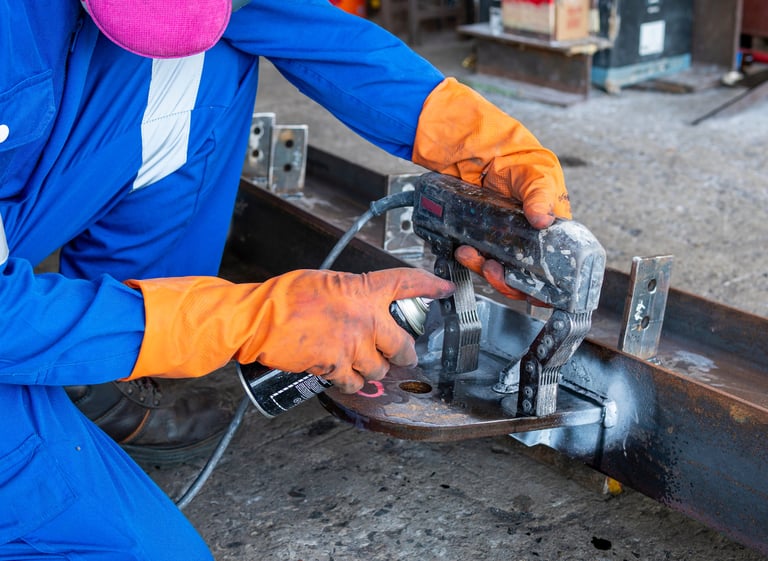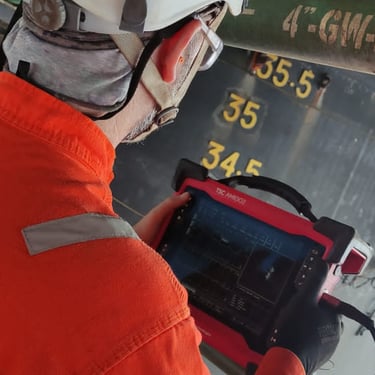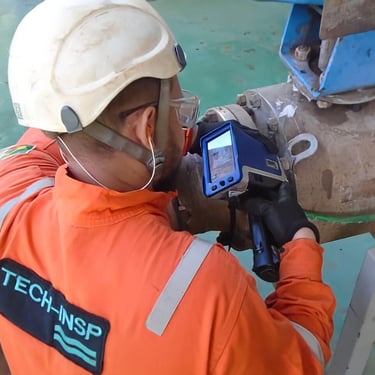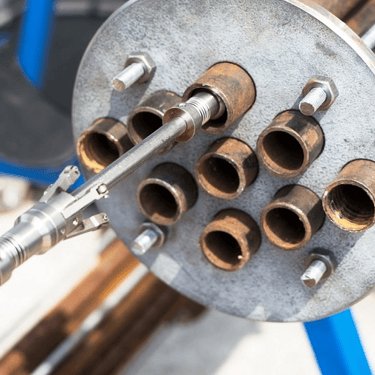

Liquid Penetrant Inspection
Magnetic Particle Testing (MPT) is an advanced Non-Destructive Testing (NDT) technique that enables the detection of surface and subsurface discontinuities in ferromagnetic materials, meaning those that can be magnetized. Industries across various sectors widely use this method to identify hidden defects, ensuring the integrity and safety of essential components.
The technique is based on the magnetic properties of conductive materials. When a magnetic field is applied to the analyzed piece, magnetic particles are distributed over the surface. These particles accumulate in areas where there are flaws or discontinuities, making even subsurface defects visible. Therefore, this ability to reveal internal flaws is crucial for maintaining quality and safety in various industries, preventing failures that could compromise the production process and worker safety.
Steps of the Liquid Penetrant Inspection Process
Additionally, magnetic particle testing ensures that companies comply with strict technical standards, avoiding sanctions and maintaining a high-quality standard. Unlike other inspection methods, this technique does not damage the inspected parts, allowing for their continued use and offering an excellent cost-benefit ratio.
Next, we will explore in detail the operation, advantages, and applications of magnetic particle testing, understanding how this technique has become essential in preventing defects in magnetic materials.
What Are Magnetic Particles?
Magnetic particles are components developed from iron powder or iron oxide, with visible or fluorescent properties, used to detect discontinuities in ferromagnetic materials. These particles are magnetizable, meaning they require a magnetic field to be retained in discontinuities and do not remain magnetized in the absence of this field.
Basic Concepts
Magnetic particle testing is based on three main concepts: magnetic field, magnetic field lines, and leakage field. When a ferromagnetic material is subjected to a magnetic field, the field lines pass through the piece. If there is a discontinuity, it disrupts these lines, creating a leakage field. As a result, the applied magnetic particles are attracted to these disturbed areas, forming a visual indication of the discontinuity.
Magnetic Field:
The region around a magnet where magnetic forces are exerted, represented by magnetic flux lines that exit from the magnet's north pole and enter its south pole.
Magnetic Field Lines:
These are the paths that magnetic particles follow within the field. In a ferromagnetic material, these magnetic flux lines can be interrupted by discontinuities, creating a leakage field.
Leakage Field:
Occurs when the magnetic flux is diverted due to a discontinuity in the material, creating a new polarization that attracts magnetic particles, revealing the defect.
Importance of Magnetic Particle Testing in Industry
Magnetic particle testing plays a crucial role in the industry, offering an effective solution for detecting various critical issues that can compromise the structural integrity and functionality of components. This non-destructive technique is particularly efficient in:
Detection of Surface and Subsurface Cracks and Fractures
Magnetic particle testing is highly sensitive in detecting surface and subsurface cracks, even those not visible to the naked eye. These defects can result from fatigue, corrosion, or stresses during manufacturing. Identifying these flaws is essential to prevent their progression, ensuring safety and extending the lifespan of components.
Identification of Defects in Welds and Wear
Another significant benefit is the ability to identify defects in welds, such as cracks, inclusions, and lack of fusion. These flaws can compromise the safety and strength of materials, making immediate correction essential to maintain the structural integrity of components. Additionally, the technique reveals surface wear, abrasions, and deformations, which are critical in applications where structural integrity is paramount.
Detection of Variations in Microstructure
Through magnetic particle testing, it is also possible to identify variations in the material’s microstructure. These variations can compromise structural integrity in the long term, making regular inspections a preventive practice essential for avoiding unexpected failures.
Benefits of Magnetic Particles in Testing
Magnetic particle testing is a powerful tool for maintaining quality and safety in various industries, ensuring that critical components are free from defects. By understanding the functionality and importance of magnetic particles, it is possible to apply this technique effectively to protect production processes and ensure product reliability.
Some of its benefits include:
Precision:
Magnetic particles enable the precise detection of surface and subsurface discontinuities, ensuring the identification of defects that could compromise material integrity.
Non-Destructive:
As a non-destructive testing method, the use of magnetic particles does not damage the inspected part, allowing for its continued use.
Cost-Effectiveness:
This method offers excellent cost-benefit advantages, as early detection of defects prevents major problems and ensures compliance with technical standards, avoiding rework and penalties.










